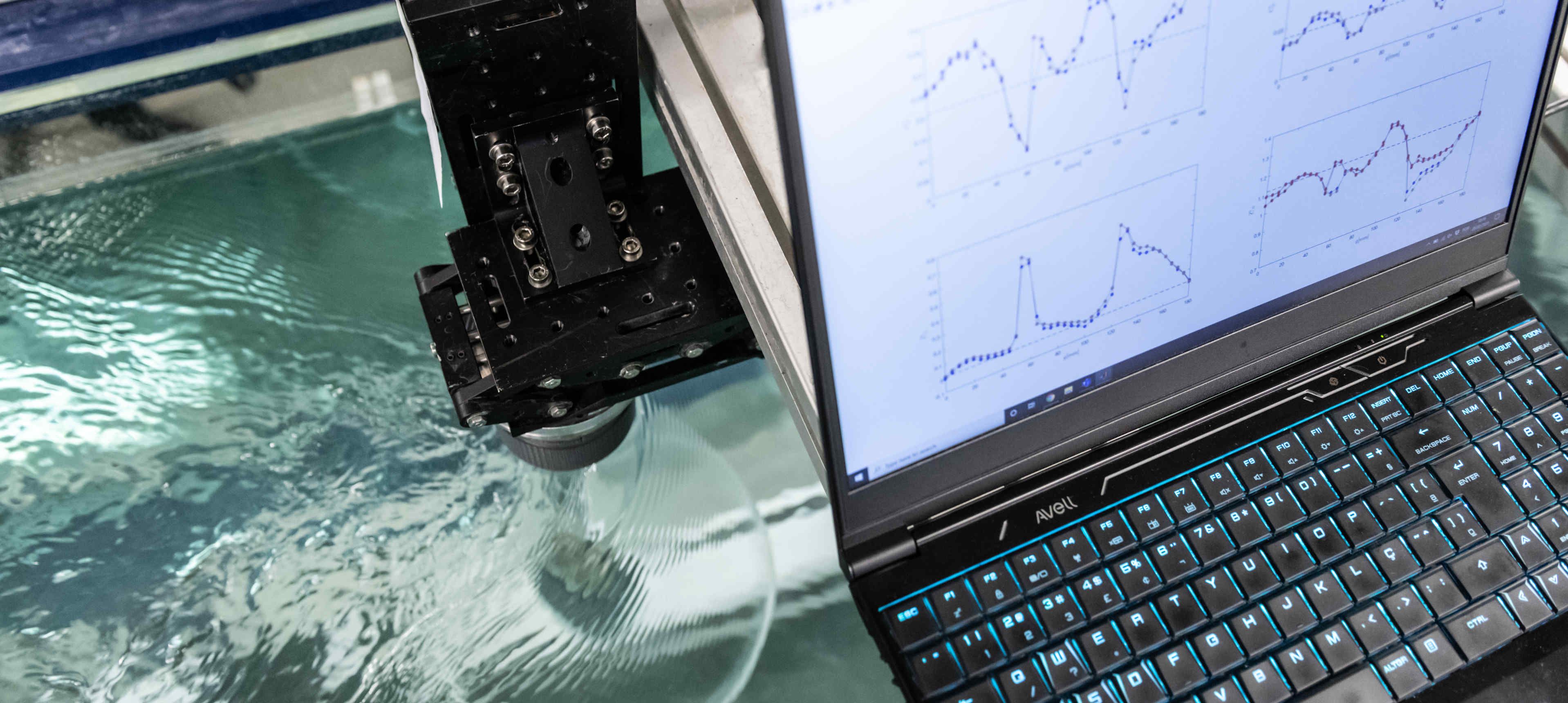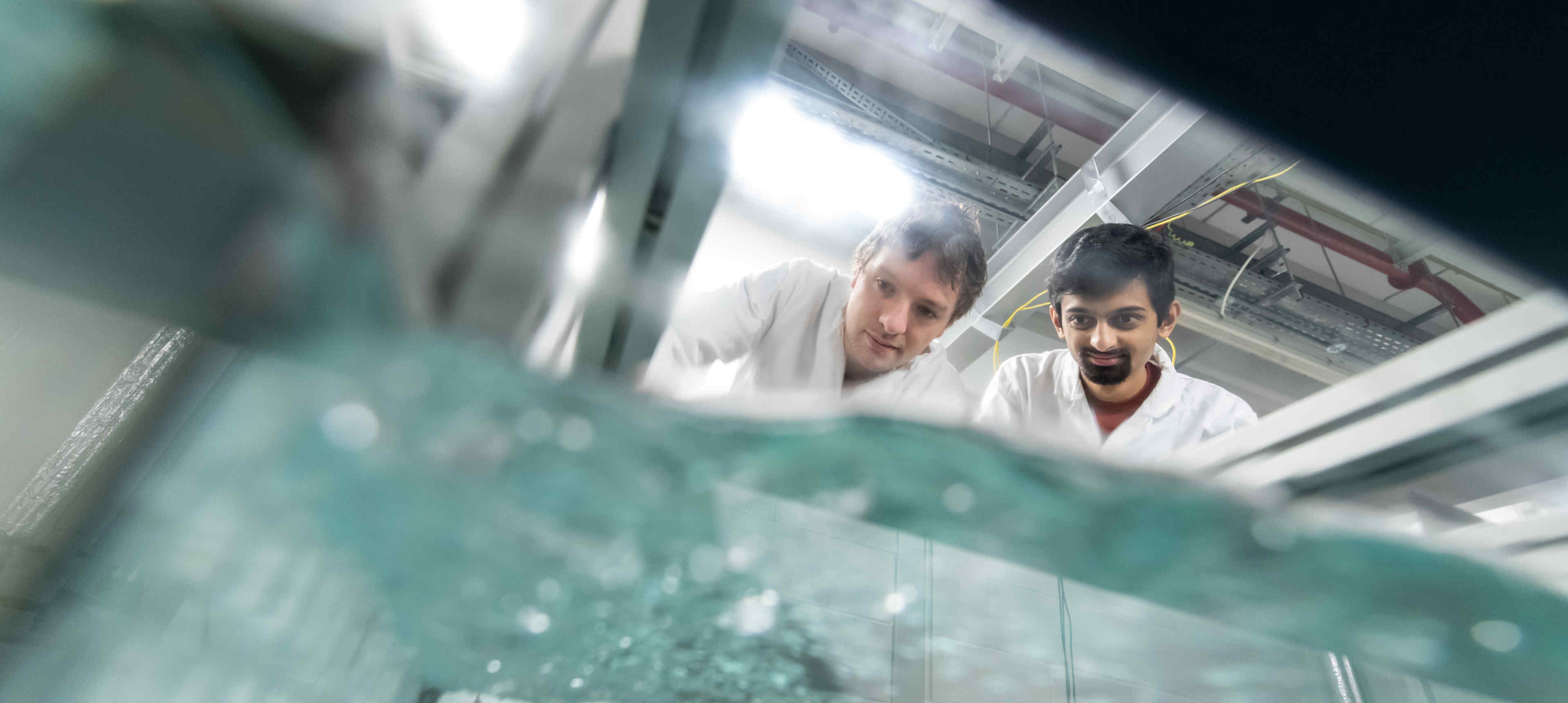Hydrodynamics Flume
The Hydrodynamics Laboratory opened in 2013 and features a recirculating, free-surface water flume. With a 0.6 m square test section of 9m in length, the flume can produce flow velocities of up to 1 m/s. It has a 4:1 contraction and three turbulence-damping screens in order to maintain a high-quality flow in the test section. Since the kinematic viscosity of water is 10 times smaller than that of air, experiments can be performed with much smaller velocities (and hence smaller time scales) for an identical Reynolds number. In turn, this makes extremely high temporal resolution experiments possible.
The test section, made from glass, provides complete optical access from all four sides. This makes the facility ideally suited for the application of high-speed (time-resolved) laser diagnostics for fluid mechanics, such as particle image velocimetry to measure velocities, and planar laser-induced fluorescence to measure scalar concentrations. Additionally, a controllable moving frame is mounted above the facility so that towing type experiments can also be performed, as well as unsteady aerodynamics experiments (e.g. rapidly accelerating race car geometries).
The facility is highly flexible and can accommodate a broad range of research projects. Recent experiments include: studying the growth rate of turbulent wakes through the process of turbulent entrainment, static mixing enhancement using multi-scale mixers, passive flow control of vortex-induced vibrations for offshore structures, using polymer additives to reduce turbulent skin friction drag, and simulating take offs/landings of aquatic/amphibious micro unmanned aerial vehicles.




--tojpeg_1587476067312_x4.jpg)
